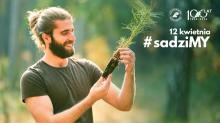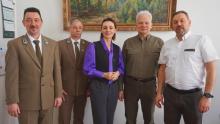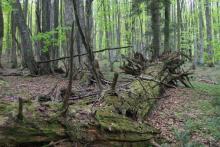 Asset Publisher
Asset Publisher
Polish forests
Poland is in the European lead, while concerning the area of all forests. They cover about 29,2 % of the country territory, and grow within the area of 9,1 million hectares. The overwhelming majority of the forests is state owned, of which almost 7,6 million hectares are managed by the State Forests National Forest Holding..
The number of Polish forest is still growing. The forestation rate of the country has increased from 21 % in 1945 to 29,2 % at the moment. Between 1995 and 2008, the forest area increased by 310 thousand ha. The basis for afforestation works is the "National Programme for Increasing the Forest Cover" (KPZL), assuming an increase of the forestation rate up to 30 % by 2020 and up to 33 % by 2050. Polish forests abound in flora, fauna and fungi. 65 % of the total number of animal species live there.
The forests grow in our country on poor soils, mainly because of the development of the agriculture in previous years. It influences the distribution of the types of the forest sites in Poland. Over 55 % of the forest areas is covered with coniferous forests. In other areas, there are forest sites, mainly the mixed ones. Their small part constitute alder and riparian forests – not more than 3 %.
In the years 1945 – 2011 the area of natural deciduous tree stands within the area of the State Forests National Forest Holding increased from 13 to 28,2 %.
Within the lowlands and uplands the most often occurring tee species is pine. It covers 64,3 % of the forest area of the State Forests National Forest Holding and 57,7 % of private and commune forests. In the mountains the predominant species is European spruce ( in the west) and European spruce with beech (in the east). Domination of pine is the result of carrying on sustainable forest management in the past. Once, the monocultures (crops or cultivations of one species) were the answer to the great demand of industry for wood. Such forests appeared to be quite fragile to climatic factors. They also were often the prey of pests' expansion.
In Polish forests, the share of other tree species, especially deciduous trees have been systematically increasing. The foresters have stepped aside from monocultures – that is why, they try to fit specific species of the forest stand to the natural stand, that would be proper for the given area. Thanks to that, in the years 1945 – 2011, the area of the deciduous tree stands within the lands of the State Forests National Forest Holding increased from 13 to 28,2 %. There occur more and more frequently the following tree species: oaks, ashes, maples, sycamore maples, elms, but also birches, beeches, alders, poplars, hornbeams, aspens, tilias and willows.
Our forests are the most often represented by the forest stands aged 40 to 80 years. The average age of the forest equals 60 years. More and more trees are of big size at the age over 80 years. Since the end of the Second World War, the forests' area has increased up to almost 1,85 million hectares.
Raport o stanie lasów w Polsce 2012
 Asset Publisher
Asset Publisher
Jarząb brekinia wraca do polskich lasów
Jarząb brekinia wraca do polskich lasów
20 października b.r. pracownicy Nadleśnictwa Karnieszewice razem z przedstawicielami mediów (z uwagi na uwarunkowania epidemiczne było nas niewielka grupa) spotkali się w leśnictwie Koszalin w celu posadzenia sadzonek jarzębu brekinii i ogłoszenia okolicznym mieszkańcom, że to niezwykłe drzewo wraca do lasów i już niedługo będzie bardzo cennym elementem bioróżnorodności naszych drzewostanów.
Jarząb brekinia jest jednym z najrzadszych, bardzo osobliwych i jednocześnie pięknych drzew leśnych. Nazywany jest również brzękiem, jarzębiną klonową, bereką, czy wreszcie na Pomorzu gruszą klonową. Należy do rodzimych gatunków śródziemnomorskiego pochodzenia. Występuje w Europie, Azji Mniejszej, na Kaukazie i w północnej Afryce. W Polsce osiąga północno-wschodni zasięg. Najlepiej czuje się w miejscach nasłonecznionych, na żyznych siedliskach, w towarzystwie dębów, lip i grabów.
Drzewo to cenione było przez naszych przodków i wykorzystywane w medycynie ludowej, w wyrobach spożywczych, a z uwagi na swoje twarde, ciężkie ale elastyczne drewno również w meblarstwie i stolarstwie. Niestety użyteczność tego drzewa przyczyniła się do jego zniszczenia. W Polsce jest bardzo rzadki, umieszczony został na polskiej czerwonej liście w kategorii NT (bliski zagrożenia), objęty ochroną gatunkową na terenie całego kraju. Jest jednym z najmniej znanych rodzimych gatunków leśnych, a jednocześnie jedną z najcenniejszych polskich, dziko rosnących jarzębin osiągającym znaczne rozmiary pod względem wysokości (25-30 m) i grubości (ponad 1 m w obwodzie). Rosnąc w odosobnieniu, tworzy owalną, nisko osadzoną i silnie rozgałęzioną koronę, natomiast w zwarciu w lesie jest smukłym, gonnym drzewem. W maju kwitnie białymi kwiatami zebranymi w baldachogrona. Jesienią liście przebarwiają się na intensywnie czerwony lub malinowo - różowy kolor, a wierzchołki gałęzi obsypane są brązowymi, nakrapianymi owocami.
Pomimo wielu swoich zalet brekinia naturalnie występuje w Polsce na nielicznych stanowiskach. Znaleźli się jednak leśnicy – praktycy, których indywidualne inicjatywy przywrócenia tego gatunku naszym lasom znalazły finał w programach Regionalnych Dyrekcji Lasów Państwowych. W ramach programu realizowanego przez RDLP w Szczecinku na terenie Pomorza Środkowego posadzonych zostało 10 400 sztuk drzewek, a w Nadleśnictwie Karnieszewice 1 560 sztuk. Od dzisiaj kolejne 100 sztuk będzie rosło w koszalińskim lesie.
Prowadzone z powodzeniem przez Lasy Państwowe nasadzenia tego cennego gatunku dają mu duże szanse na stały powrót do polskich lasów.
Małgorzata Rokicka - Nadleśnictwo Karnieszewice


 fot. Paweł Fabijański
fot. Paweł Fabijański
 fot. Paweł Fabijański
fot. Paweł Fabijański
 fot. Paweł Fabijański
fot. Paweł Fabijański

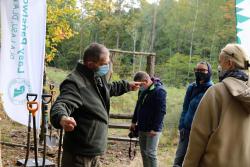 Nadleśniczy w rozmowie z uczestnikami wydarzenia
Nadleśniczy w rozmowie z uczestnikami wydarzenia
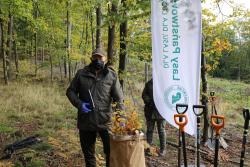 Prezentacja sadzonek
Prezentacja sadzonek
 Liście jarzębu z bliska
Liście jarzębu z bliska
